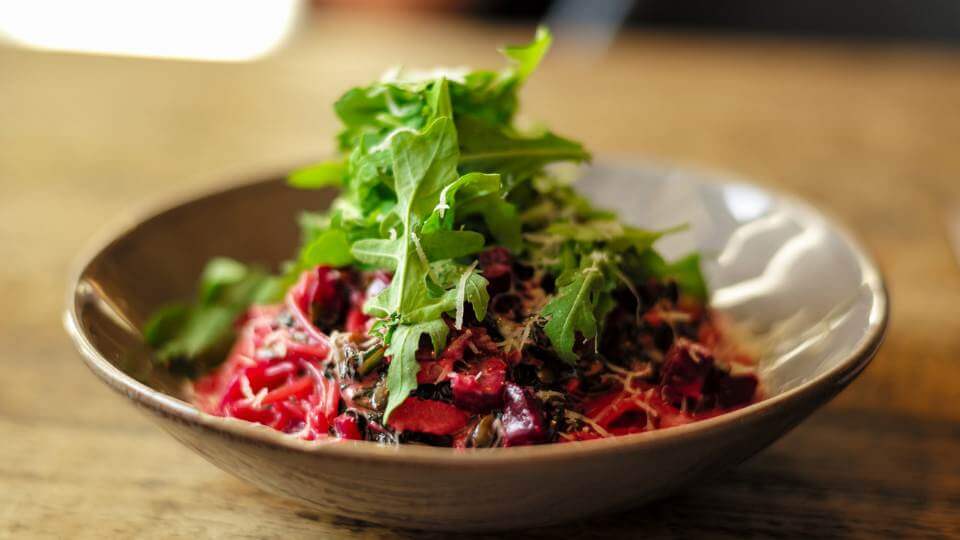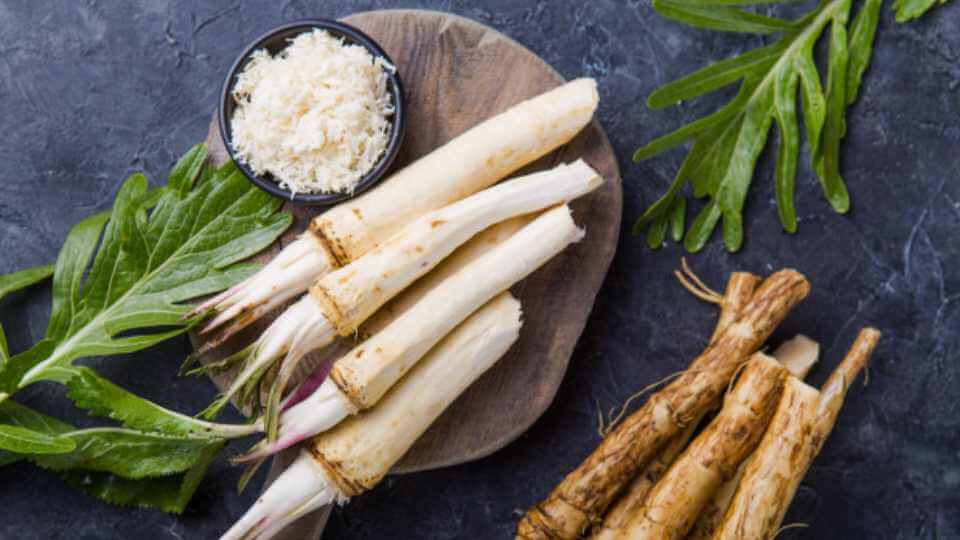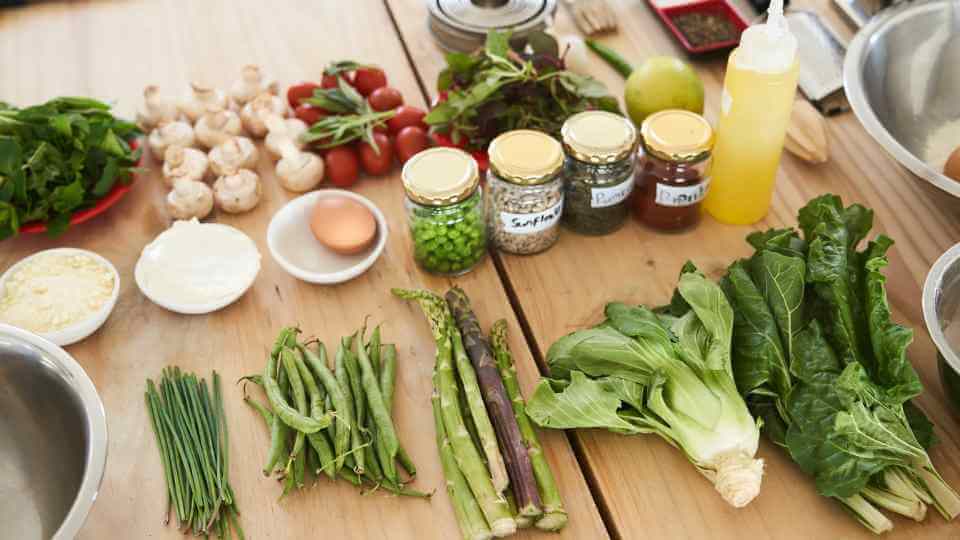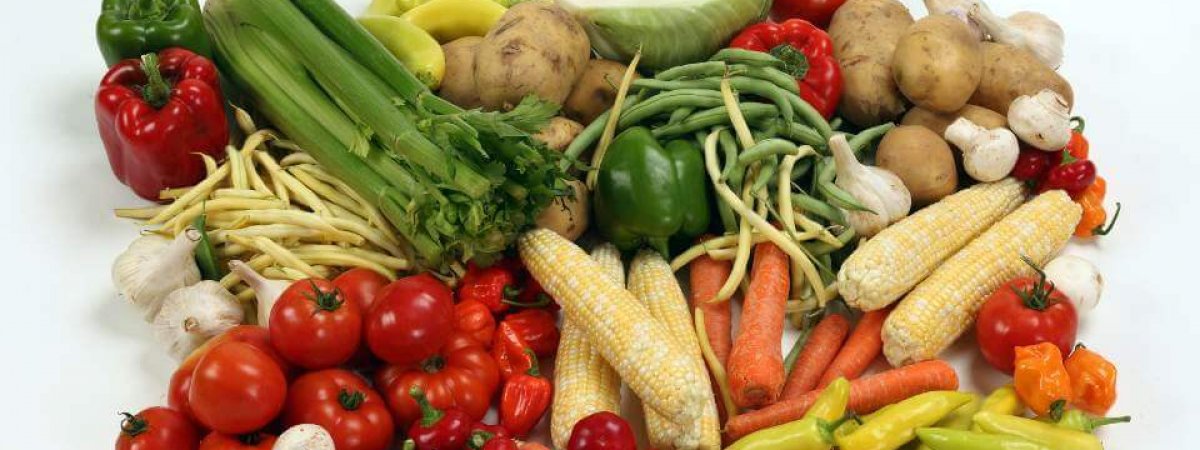Cruciferous vegetables are greens rich in vitamins C, K and E, folate, and fiber. These are low-calorie veggies that are also great sources of phytonutrients – plant-based compounds that reduce the risk of cancer and lower inflammation.
Talking about other beneficial nutrients in cruciferous vegetables, fiber helps in weight loss and increases life expectancy. Glucosinolates are elements that contribute to the refreshing aroma of cruciferous vegetables and show anticancer effects.
Given their easy-to-grow techniques and health benefits, we have brought you a list of cruciferous vegetables that you can grow in your garden or backyard.

List of Cruciferous Vegetables
Arugula
The first on our list of the best cruciferous vegetables to grow at home is Arugula. It is a leafy green that tastes spicy and also known by the name Rocket. You can easily grow arugula and add the greens to your salads and stir veggie fries.
Arugula thrives well in partial shade or direct sunlight, and rich soil. The fast-growing and hardy crop can be sown soon after the last frost, and harvested in the fall growing through summer.
Broccoli
Also popular by its other name, Purple Sprouting Broccoli, this one is among the common winter cruciferous vegetables to grow in your garden. It is an allotment crop that thrives in late winters.
Broccoli is an easy-to-grow veggie that you can plant any time of the year. For having something different, you can choose the romanesco cultivar. The home gardeners living in the USDA zones see more successful production of broccoli.
When grown correctly, it is also possible to plant broccoli in containers. This even extends the growing season of the green vegetable.
Broccoli Rabe
Also called rapini, broccoli rabe is our first uncommon yet delicious cruciferous vegetables on the list. Even though it shares most of the growing conditions with broccoli (along with the name), rapini is closer to turnips and mustard green in its qualities.
Known as a cut-and-come-again crop, broccoli rabe produces the first bud (central) within two months of its plantation. From the central bud, you will see smaller shoots emerging to its sides. The best time to harvest rapini is when they are small and the buds can be used as seed.
Calabrese
In many large stores and supermarkets, calabrese is sold as broccoli. Despite the unavoidable similarities in appearance of the two cruciferous vegetables, there are some differences between the crops. Unlike broccoli, calabrese grow large, green heads on thick stalks.
Broccoli is seen giving rise to smaller white or purple heads on thin stalks. Another significant difference between the two greens is that calabrese is great as a fall crop, whereas broccoli is a frost-tolerant crop.
Cauliflower
Cauliflower is a garden stalwart after cabbage! This saves a very crucial place on our list of cruciferous vegetables – the easy-to-grow and low-calories crop.
It is also rich in Vitamin C, and you can also grow the green or purple flowering varieties for change. On contrary to the common white cauliflower, the green and purple ones do not demand blanching.
For growing cauliflower, you must prepare a rich soil and follow frequent watering for a healthy and fresh crop. The undependable vegetable type grows throughout the year.
Brussels sprouts
The next on our list of cruciferous vegetables are brussels sprouts. In addition to making for an integral dish on Christmas Eve, brussels sprouts are a versatile vegetable that can be consumed roasted and boiled.
Depending on the variety you choose to grow, you can mostly harvest the greens from October. Being an easy-to-grow vegetable, brussels sprouts grow into a robust vegetable that can survive colder weather and frosts pleasingly.

Cabbage
The most common entry in the list of top cruciferous vegetables to grow at home is cabbage. Grown in a different color, shapes and sizes, cabbage is among the favorite vegetable of home gardeners for multiple reasons.
While many go for the most commonly found green cabbages, there are home gardeners who wish to grow the purple and red varieties of the cruciferous vegetable as well.
It’s good to keep a note of the fact that the colorful kinds take longer to reach maturity and are found less tender as compared to the green ones. If you are looking for a common yet distinctive variety of the vegetable, choose the Savoy cabbage.
It is the most tender and sweet of all the cabbage varieties. The vegetable makes for a portion of staple food in most kitchens and stands out from the counterparts for its crippled texture.
Chinese broccoli
Another common broccoli variety on the list of cruciferous vegetables we brought you is Chinese broccoli. The crop is an oriental cultivar having tender stems. The flowers, buds, and leaves of Chinese broccoli are edible.
It is a fast-growing crop that is high in Vitamin C content and also famous by the name of gailan or kai lan. The plant thrives best in sunny climate and can be grown in containers.
If you have ample space in your garden to grow Chinese broccoli, plant a couple of flowers for better pollination.
Chinese cabbage
Chinese cabbage is also a quick-growing cruciferous vegetable that thrives as a late summer crop in home gardens and backyards. It loves full sun for healthy growth. When grown in extremely hot weather, a little shade would allow for proper growth of the green plant.
There are three common varieties available – loose headed, tall cylindrical and barrel-shaped Chinese cabbage. Each variety requires equal care and attention.
Horseradish
Horseradish is included in this list for the pungent roots. It is used to give dinners a spicy taste. When growing horseradish, make sure to take good care of the plant throughout the growth stage as it may turn invasive.
To get away with this issue, you can grow the cruciferous greens in containers. It grows best in full sun areas of the garden/backyard. The flowers of horseradish should bloom and shed off before you reach the harvest season.
Keep patience for the foliage to die in the fall season and then harvest the white, slender roots of the plant.

Radish
Radish is yet another easy-to-grow plant on our list of cruciferous vegetables! You can grow the crop in beds or containers. When you sow the seeds in the spring, you can enjoy continuous supply all through the summer months.
For winter varieties, July and onwards is the right time. Make sure to keep the soil moist for having fleshy roots that don’t easily split. Don’t by the diminutive size of the vegetable, it is a surprisingly smooth process to grow radishes at home.
Kale
Also famous as leaf cabbage, here’s yet another winter crop on the list of cruciferous vegetables – Kale. It is among the most front-tolerant crop you can grow in the garden. You should cut the kale leaves when they are still fresh and young.
Kale is often cooked in olive oil for rich taste and flavor. If you cut the older foliage, the taste will be bitter. When growing kale, make sure to choose a partially shady area in the backyard. Despite being a pest-resistant crop, kale requires complete protection from birds.
Collard greens
Collard Greens are well-known cruciferous vegetables across the Southern states. The crop is rich in vitamins and fibre. You can easily grow the plant in the late summer months for continuous supply through the winter months.
This one among the top cruciferous vegetables to grow at home is a common staple food of Southern American homes. It loves cool weather conditions and is mostly grown in fall.
Like other cabbage family veggies, these also bolt-in high heat. Ensure regular watering and mulching at the base of the crop. It keeps the coil cool and prevents bolting.
Mustard
Another entry that fits well in the cruciferous vegetable list is mustard. The easy-to-grow crop can be a good option if you are looking forward to introducing your kids to gardening. The best way to sow mustard seeds is directly into the final position.
The plantation site can be a container with freshly prepared potting mix or a well-tended bed. Remember watering the mustard seeds from time to time, mainly during warmer climate.
You can harvest mustard for its foliage, or you can also leave it to bear flowers. Soon after the flowers shed, you will see seed pods emerging. You can pick the seeds when ripe.
Swedes and Turnips
Both turnips and swedes can be sown right into their final position. Though identical in appearance, swedes are larger than turnips. Moreover, turnips are rounder, smaller and have a whiter flesh as compared to swedes.
Also called rutabagas, swedes produce orange or yellow flesh. Talking about tolerance of cold weather, both the cruciferous veggies are favorable cool weather crops. These are hardy plants that can resist cold spells and frosts.
Going by what gardening experts say, turnips should be harvested when they grow into a size slightly larger than a golf ball.
Depending on the variety of crop you choose to grow, it is essential to understand the right spacing between them to prevent them from turning deformed or stunted.
Health benefits of cruciferous vegetables
Now that you know what are cruciferous vegetable and have got a sorted list to choose from to grow these greens at home, let us also throw some light on the perks of eating the delicious vegetables.
Reduces the risk of cancer
One of the main reasons why you should add any of the cruciferous vegetables listed above into your daily diet is the prevention of cancer.
Okay, there is no substantial medical evidence for the same but there have been several pieces of research by healthcare experts with positive inferences of cruciferous vegetables lowering the risk of cancer.
Over 70% of studies have concluded a relation between protection against cancer and cruciferous vegetables. There are various components found in these veggies that directly link to reducing cancer risks.
As per the review by American Institute of Cancer Research, one of the main components have even shown results in stopping the growth of malign tumors in the breasts, colon, uterine lining, lung, and cervix.
Multiple health and lifestyle studies have also shown results that favor in cruciferous vegetables linked to reduced cases of prostate cancer.
One of the many components in cruciferous vegetables is sulforaphane, a phytochemical that can stimulate enzymes (in the body) that detoxify/kill carcinogens before they attack the cells.
Indole 3-carbinol and crambene are the other two compounds in cruciferous greens that activate detoxification enzymes in the body.

Reduces oxidative stress
Oxidative stress is the excess of oxygen-free radicals, harmful molecules that generate in your body and increases the risk of chronic illnesses like cancer. Cruciferous vegetables have shown positive results in reducing oxidative stress.
When these harmful free radicals are produced less in the body, the risk of lung, breast, prostate, colon and various other types of cancers is minimized. It is advised to consume 1-2 cups of cruciferous vegetables to keep away from such health issues.
It is best to eat these green raw or steamed (lightly) to retain its beneficial components like phytochemicals.
Prevents cardiovascular disease
Doctors advise to include cruciferous and dark-yellow veggie along with fish to your diet to protect from heart diseases. Various studies have confirmed that eating cruciferous vegetables can minimize the levels of inflammation markers in the body.
Besides these, consuming cruciferous vegetables also helps in maintaining a healthy lifestyle.
Tips for cooking cruciferous vegetables
If you want to get the maximum benefits of cruciferous vegetables, here are some tips on cooking your veggies:
Never overcook these kinds of vegetables. It releases strong sulfur odor, making it unappealing.
You can choose from various types of cruciferous vegetables – freshly-packaged, ready-to-go frozen packagings found in supermarkets.
Eat your green salad with broccoli or cauliflower for a boost of nutrients.
Add finely chopped cruciferous veggies to your stews, soups, and casseroles.
While purchasing broccoli (or harvesting the ones you have grown in the backyard!), pick firm florets with a dark green, bluish, or purple hue on its top. These contain a high amount of vitamin C, beta-carotene than lighter green floret tops.
Don’t buy the broccolis having yellow tops or is bendable and limp.
In a Nutshell
Most cruciferous vegetables are easy-to-grow crops that you can plant and harvest throughout the year. We hope you find your favorites from the list of cruciferous vegetables we got you in this blog.
Follow the cooking tips to get the most benefits of the delicious greens and let us know how you liked the growing experience in the comments below!
You may also like to read
How to Grow Cauliflower? Start with Your Vegetable Garden at Home!







3 thoughts on “List of Cruciferous Vegetables – 15 Popular Green Crops to Grow at Home”
Nice content
Thank you so much Sasmita. Hope to provide you with much more informative content in the future.
Thank you